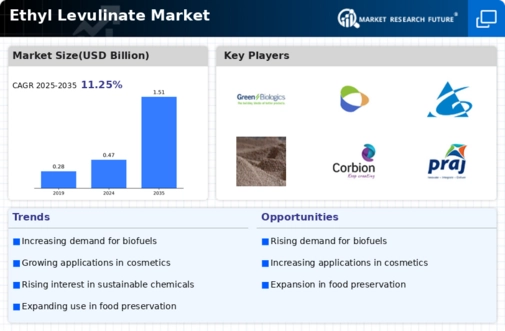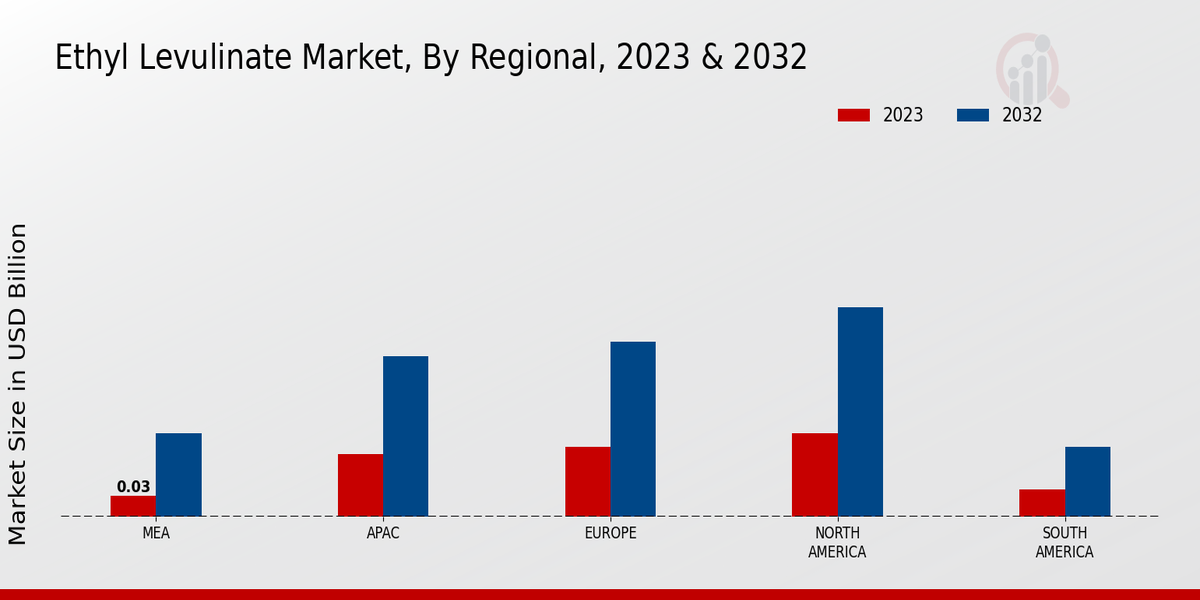Market Growth Projections
Rising Demand for Biofuels
The Global Ethyl Levulinate Market Industry is experiencing a surge in demand for biofuels, driven by the increasing need for sustainable energy sources. Ethyl levulinate, derived from biomass, serves as a promising biofuel additive that enhances the performance of traditional fuels. As governments worldwide implement stricter regulations on carbon emissions, the adoption of biofuels is likely to rise. This trend is reflected in the projected market growth, with the industry expected to reach 0.47 USD Billion in 2024 and potentially 1.51 USD Billion by 2035, indicating a compound annual growth rate of 11.21% from 2025 to 2035.
Advancements in Green Chemistry
Innovations in green chemistry are propelling the Global Ethyl Levulinate Market Industry forward. The development of eco-friendly production methods for ethyl levulinate, such as catalytic processes that minimize waste and energy consumption, aligns with global sustainability goals. These advancements not only improve the efficiency of production but also reduce the environmental impact associated with traditional chemical processes. As industries increasingly adopt green chemistry principles, the demand for ethyl levulinate is likely to rise, positioning it as a key player in the transition towards more sustainable chemical manufacturing.
Growing Interest in Natural Solvents
The shift towards natural solvents in various industrial applications is a significant driver for the Global Ethyl Levulinate Market Industry. Ethyl levulinate, known for its low toxicity and biodegradability, is increasingly favored over conventional solvents that pose environmental and health risks. This trend is particularly evident in sectors such as coatings, adhesives, and cleaning products, where manufacturers are seeking safer alternatives. The growing interest in natural solvents is likely to enhance the demand for ethyl levulinate, contributing to the overall growth of the market.
Versatile Applications in Food and Beverage
The versatility of ethyl levulinate in the food and beverage sector significantly contributes to the Global Ethyl Levulinate Market Industry. This compound is utilized as a flavoring agent and a food preservative, appealing to manufacturers seeking natural alternatives to synthetic additives. The growing consumer preference for clean-label products is likely to bolster the demand for ethyl levulinate, as it aligns with the trend towards healthier and more sustainable food options. The increasing incorporation of ethyl levulinate in various food applications may further enhance its market presence, reflecting the industry's potential for growth.
Regulatory Support for Sustainable Chemicals
The Global Ethyl Levulinate Market Industry benefits from supportive regulatory frameworks aimed at promoting sustainable chemicals. Governments are increasingly implementing policies that encourage the use of renewable resources and environmentally friendly products. This regulatory support is likely to create a favorable environment for the growth of ethyl levulinate, as manufacturers seek to comply with these regulations. The anticipated market growth, with projections indicating a rise to 1.51 USD Billion by 2035, suggests that the industry is well-positioned to capitalize on these supportive measures.





















